WASHINGTON STATE WINE TASTING TRAVELS: YAKIMA VALLEY AND WALLA WALLA
This latest visit to Washington wineries confirms what my husband Russ and I had already determined: we prefer bold and brash merlots, cabernet sauvignons, zinfandels, malbecs and syrahs.
Of course, there are other varietals and blends we are happy to wrap our tongues around (so to speak), which includes some crisp and clean whites and rosés, but give me a jammy red that fills my mouth with flavor and I am in my happy place. Which is why Yakima Valley and Walla Walla wineries jumped to the head of our “wine labels to explore” list.
Yakima Valley appellations – which include Yakima, Zillah, Prosser and the Red Mountain & Vicinity AVAs– is an 80-mile stretch of rural countryside. We focused our time in Red Mountain, Prosser and neighboring Horse Heaven Hills. Yakima Valley wineries are known for their cabernet sauvignon, merlot, Sangiovese, cabernet franc and syrah.
Walla Walla (which means “many waters”) contains more than a 100 wineries in over 2,000 acres of rich agricultural farmland. Two thirds of the appellation exist in Washington; the other third in Oregon. Similar to the region between Bordeaux and Burgandy, France, Walla Walla lies on the 46°N latitude.
When Russ and I road trip through wine regions, we anticipate being able to reasonably make it through four to seven stops. In some cases, that depends on the distance between wineries. At other times, it’s when our tongues stop tasting, we’re having too good a time socializing to make it out of the winery, or we decide it’s unsafe to drive if we imbibe in one more tasting. This time we had Russ’ brother Randy and our sister-in-law Cher with us. Cher only drinks whites, but the perspective of four tasters both widened and narrowed the list of wines I’ll discuss. If the three red wine drinkers didn’t like a red wine, it didn’t make it into my notes.
Russ and Randy had our routes plotted. Cher helped navigate. I enjoyed the scenery. (The safer choice if you know my directional challenges!) We had a checklist of recommended wineries, which expanded when we’d get to one winery and the pourer would highly suggest we visit a competitor.
Unlike Oregon wineries that specialize in pinot noir or California wineries in well-known regions that can easily charge $25 for a tasting, tastings at all the places we visited were mostly $5 for five to six wines. Occasionally a tasting would be $10. In rare instances there would be two tastings to choose from, one of which was a slightly more expensive flight of reserves, so we’d try one of each. We visited six or seven wineries a day (when not doing other tourist sightseeing), so shared our tastings. A sip or two is all we needed anyway for a yay or nay. At all the wineries, buying a bottle (or two or three) eliminated the tasting fee. We mostly visited wineries (because we like to see the venue and browse their gift shop as much as we enjoy tasting their product), but occasionally a tasting room was all that was accessible.
The list of wines (and wineries) we enjoyed is plentiful. Therefore, I am dividing this blog into two sections, beginning with the Yakima Valley region. Though I had decided not to focus on reviewing restaurants, there were places whose culinary achievements were so outstanding that I would be remiss in not sharing them with you.
The Yakima Valley wine region is roughly a 150-mile drive from Seattle or Spokane, WA or from Portland, OR, but for this journey to Yakima Valley and Walla Walla, we were beginning from Bend, OR.
Part 1: Yakima Valley
Mary Hill Museum of Art:
After a drive through the golden fields of northern Oregon along Rte 97, we crossed the expansive bridge over the Columbia River. Our first stop was the Mary Hill Museum of Art, an unexpected oasis perched high on the mountain with birds’ eyes views of the Columbia Gorge rushing below. Although seemingly in the middle of nowhere, the museum was packed with tourists and school children on field trips. The grounds leading up to the broad multi-tiered staircase to the mansion above are adorned with sculptures and picnic benches. Originally planned as a home for visionary entrepreneur and philanthropist Samuel Hill, credited as the force behind the creation of highways connecting Oregon and Washington in the early 1900’s, he abandoned the project in 1917 when work proceeded too slowly and his road project on the north bank of the Columbia River was detained by Washington officials. The home became a museum, dedicated in 1926 to his friend, Queen Marie of Romania. Evidence of their friendship is apparent, from her donated displays of her gowns and magnificent furred capes that any Hollywood diva would salivate to wear, and in the collection of photographs. The first floor pays homage to Queen Marie and to magnificent ornate furniture of a golden era, but it’s the floor below that boasts an 87-piece collection of original Auguste Rodin sculptures and drawings. There are permanent and temporary collections. The one I found most striking was the collection of 90 unique chess sets and chess-related works of art housed in the George E. Muehleck Jr. Gallery of International Chess Sets. The exhibit runs until November 15, 2016. There’s a collection of American Indian crafts and apparel, but it was the video clips, playbills and story of Loïe Fuller (1863 – 1928) that fascinated me. I had never heard of her, yet here was a woman who pioneered modern dance. Her 35-year history as a performer, using yards and yards of silky capes and veils to weave a tale of mystery and drama, left her audience spellbound. As someone who has had an extensive career as a belly dancer and past publisher of an international Middle Eastern dance & culture magazine, I have swirled veils and watched friends twirling capes mimicking a la Loïe Fuller, but I am sure none of them knew the technique originated so many years ago. The museum has a small unadorned café, whose patio overlooks the Columbia Gorge. Cher and I shared a tuna melt sandwich which was not only delicious, but filled both of us. Save your museum receipt. It gives you a 2-4-1 tasting at the Maryhill Winery, two minutes down the road.
www.maryhillmuseum.org
Maryhill Winery:
This winery was a must on our list. We had had a marvelous Maryhill Zinfandel at an excellent restaurant called Bridgewater Bistro in Astoria (you’ll hear more about that restaurant in another blog), so we were already anticipating what we’d taste at the winery. The winery has been open since 2001, after some corporate business owners had bought the property in 1999. We knew we were in for a treat when the back bar area shelves were packed with beribboned and medaled bottles of wines. Nearly every wine we tasted was a winner in our book. You enter the 3,000 sf tasting room from a wide verandah that opens to views of the mountains and Columbia Gorge. Grapevines stretch across the terrace top. Twinkling lights integrate with the vines. There’s also a private courtyard and a 4,000 seat amphitheater that hosts summer concert series. They were preparing for one the day we came. In between shopping their fabulous gift shop and buying two wine-themed shirts I’ve not seen elsewhere, we managed to sip on wines we heartily recommend.
The 2015 Alberino scored big with Cher, who drinks little red wine. We called it a “quiet white” because it makes its presence known without creating a big splash.
Their port wasn’t on the tasting list, but we were offered a sample anyway. Lighter than a typical port. Very fruity and more drinkable than just as an after-dinner cordial.
The 2015 Rosé of Sangiovese is a delightful summer wine. Crisp and with notes of floral, strawberry, and watermelon.
The 2015 Viognier has been their best-selling white wine since 2001. This year’s harvest proved to be sweeter than past years, so it appears under dessert wines.
The 2012 Zinfandel RSV Proprietor’s Reserve is the wine that drew us like a freshly baked apple pie waiting to be devoured when we first drank it at the Bridgewater Bistro, was still our favorite. It was a gold medal winner in the 2015 Seattle Wine Awards. Bright berries. Nice tannins. Long finish. We enjoyed this wine so much that we shared a bottle on the patio. Great wine, great scenery, great weather and great company. A must visit if you’re in the area.
www.maryhillwinery.com
Red Mountain AVA
Kiona Vineyards (Indian for brown hills), Benton City, WA:
Three generations have worked more than 230 acres of grapevines since the vineyard opened in 1975. The first wines produced were chenin blanc and the more popular lemberger. In 2015, Kiona released Old Block, a smooth, light wine with limited tannins to commemorate the vineyard’s 43 years of existence. The Estate Red Mountain Old Block, 100% from Red Mountain grapes, came from the original planting in 1975. We enjoyed the low acid, complex Estate Red Mountain Reserve, but it was the Big Kiona Zinfandel that sat long on the tongue. Like ice cream for dessert, we finished off the tasting with the 2014 ice wine. Our pourer, Brandon Gomez, who didn’t mind that we inadvertently showed up an hour before their official start of tastings, shared that this is a true ice wine; ie, it was frozen on the vines for eight hours. Kiona owns the only Gewürztraminer grapes grown on Red Mountain. Planted in 1978, we found their Estate Red Mountain Gewürztraminer, to be light, fruity, delicate, and not cloying. Unfortunately, it’s only available in the tasting room.
Our favorite? The sassy and bold Estate Red Mountain Big Kiona Zinfandel. Only one acre of zinfandel grapes is grown on Red Mountain and it’s harvested in the latter part of the season.
www.kionawine.com
Fidelitas Wines, Benton City, WA:
Neighbors of Kiona, Fidelitas is a family-owned winery of Charlie Hoppes. The winemaker’s philosophy is to be “Faithful to Bordeaux grape varieties, loyal to modern craft winemaking techniques, and true to the terroir of WA state’s Red Mountain AVA.” We were particularly taken with two of their current releases. Our favorite is the Ciel Chaval Red Wine, fermented in new French oak for 30 months. We also enjoyed the 2012 Red Mountain Cabernet Sauvignon. We thought it very “in your face,” yet smooth. It didn’t take much to realize how this wine and a great steak would be a feast. This is a small but serious winery worth a visit.
www.fidelitaswines.com
PROSSER, WA, a rich agricultural center for vineyards, but encompassing more than one AVA
Mercer Wine (Horse Heaven Hills AVA):
Mercer Wine Estates was named Washington Winery of the Year for 2016. From planting the first grapes in the Horse Heaven Hills area, this winery has grown quickly and is now known to produce more than 60,000 cases of wine a year.
2013 Estates Malbec. New release. Russ liked this one best. Soft. He says it’s very drinkable on its own.
2012 Cavalia. Won the top red wine Horse Rodeo Tasting Competition. Complex flavor. Lingers on tongue.
www.mercerwine.com
Kestrel Vintners (Yakima Valley AVA):
2012 Mourvèdre – (Mourvèdre is a prominent component in “GSM” blends; ie, Grenache, Syrah, and Mourvèdre). This one has aromas of cherry pie and blueberries with sweet oak. We could taste a hint of chocolate and herbs. Would be wonderful with red meat. Kestrel fermented it with Grenache (to hold acidity) and then it was aged in Hungarian/French/American barrels for 26 months.
2012 Malbec (100% Malbec) – The tasting notes say it’s rich in berries, enhanced and balanced by toasted oak, cola, mocha and tobacco. I feel it’s necessary to give you tasting notes assessments occasionally because, honestly, I can pick up stronger aromas or flavors, but have difficulty discerning the nuances of flavors.
The next three wines scored high with us.
2011 Tribute Red – We were told the winemaker takes the best of all the red barrels right up front to blend together. This is contrary to the usual practice of waiting until the end of fermentation to decide which ones to blend. Deliciously balanced. Cherry, pomegranate, mild cola, leather. The grapes from this were 72% Kestrel View Estates, 23% Olsen Estates, 5% Rosebud Vineyards
2011 Old Vine Cabernet Sauvignon – black cherry, red currants, pomegranate, black pepper and caramelized sugar. 100% cab. Elegant finish.
2014 Gewürztraminer Ice Wine. Bursting with ripe fruit. Full bodied. Not cloying.
www.kestrelwines.com
Hogue Cellars (Yakima Valley AVA):
We’re familiar with many Hogue wines, at least those we can find in Florida venues, but this was our chance to taste what else is available… if you’re near to their winery in Prosser or join their wine club.
2014 Terroir Barbara Rosato – Thought it a soft, perfect summer wine. Not over sweet.
2015 Terroir Edelzwicker – an Alsatian-styled blend of citrus and melon flavors. Crisp and clean.
2013 Terroir Syrah – Soft, with an almost gamey edge. Drinkable. Randy and I thought it would be great with grilled salmon.
www.hoguecellars.com
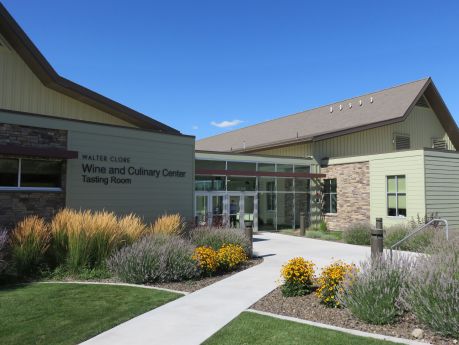
Walter Clore Wine & Culinary Tasting Center offers a glimpse into the wines of the region. photo by Russ Wagner
Walter Clore Wine & Culinary Tasting Center:
We stumbled onto the Walter Clore Wine & Culinary Tasting Center while exploring the city. Not sure how we didn’t know of it in advance, or whether we should have begun there when we first arrived in Prosser or visiting last was a lucky move. Walter Clore is the much decorated and recognized Father of Washington Wine. The Center Showcases wines from across Washington, highlighting the diverse grapes, soils and climates that make Washington wines distinctive. The Center is a bright and airy location, with tasting and education rooms. They feature a local wine region each month, but wines from across the region are available onsite, without any upcharge for easy one-stop shopping. I observed locals coming in with their wine lists, and no one I heard asking for help was looking for just one label. As Walla Walla was the featured region, and we’d be visiting the next day, this was an alluring preview. Our pourer (I think her name is Andrea) was quite knowledgeable about the history of the area, winemaking and winemakers, and directions. There are currently 16 AVAs in Washington, with some tipping over the border into Oregon. In fact, Washington is quite smart about their crunchy-granola neighbors. If an Oregonian shows their driver’s license, no state tax is charged, a plus for Randy and Cher when they bought wine at nearly every winery we visited.
While browsing the Center’s wide variety of wines, apparel, hats, and accessories, I discovered the Wine Aroma Wheel, created by University of California at Davis professor emeritus Ann C. Noble. I think the $6 tool is a handy device for learning how to describe wines you’re drinking. www.winearomawheel.com
Our wine tasting took in wineries we’d visit the next day, some we wished we could get to but didn’t have the time, and some for future visits. The Center is a wealth of information and resources. Be smart and visit. Here are some of the wines we tasted at the Center.
Palencia Winery: Victor Palencia has been producing wines in the area for about 13 years. The label is Palencia and the Albariño we tried was soft and with an underpinning of fruit that settled comfortably on the palate.
Eternal Wines & Bontzu Cellars share space in Walls Walla. Both are run by winemakers winning awards within their first year of releases. Brad Binko is a certified sommelier and owner of Eternal Wines. Post study at the Center for Enology and Viticulture on the campus of Walla Walla Community College, he focuses on Rhone varietals and single vineyard wines. Like Sorin Dumitru who owns Bontzu Cellars and has also won awards for his first releases, these rising stars believe in non-intrusive wine-making techniques. Dumitru continues the tradition of winemaking learned by his Croatian-born Grandpa Bontzu, that the grapes are harvested by hand and naturally fermented. We tasted the 2013 Bontzu GSM, his first release. The longer it sat on the tongue, the more flavors fought to be recognized.
2013 L’Ecole Merlot – Has a tad of a bite. Classic merlot. Fruity. Bold. We were doing a tasting tour of L’Ecole the next morning, so this was a happy omen of what is to come.
www.theclorecenter.org
Restaurants:
Wine O’Clock Wine Bar in Prosser – We did our best to get an RSVP into this winery that becomes a restaurant after the tasting hours close. Every single person we asked for a restaurant recommendation—and there were many– referred us to this restaurant. Next time we will be better prepared.
http://www.bunnellfamilycellar.com
Taverna Tagaris – When we couldn’t get into Wine O’Clock Wine Bar and were too hungry to wait til we returned to our hotel 45 minutes away, we stopped here after being recommended to it. We thought the food was okay and the service extremely slow, but if you’re looking for a place where the locals hang out to listen to the fusion house band on the extensive patio, among twinkling lights and a fountain, then this is for you.
http://www.tagariswines.com/taverna.html
Horse Heaven Saloon – Service was slow, maybe because this western-themed gastro-pub was packed, but in this case, the food was worth the wait.
Chef Laurie Kennedy and family owns this place. The food is fresh and All-American. Portions are large.
http://www.horseheavensaloon.com/
Part 2: Walla Walla Wineries.
Karen Kuzsel is a writer-editor based in the Orlando area who specializes in the hospitality, entertainment, meetings & events industries. She is a Contributing Editor-Writer for Prevue Magazine and is an active member of ILEA and MPI and is now serving on the 2015 – 2016 MPI Global Advisory Board for The Meeting Professional Magazine. Karen writes about food & wine, spas, destinations, venues, meetings & events. A career journalist, she has owned magazines, written for newspapers, trade publications, radio and TV. As her alter-ego, Natasha, The Psychic Lady, she is a featured entertainer for corporate and social events. karenkuzsel@earthlink.net; www.ThePsychicLady.com; @karenkuzsel; @thepsychiclady.


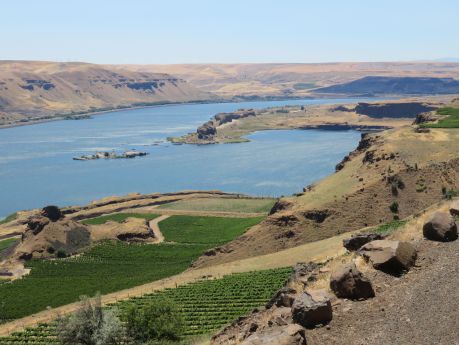
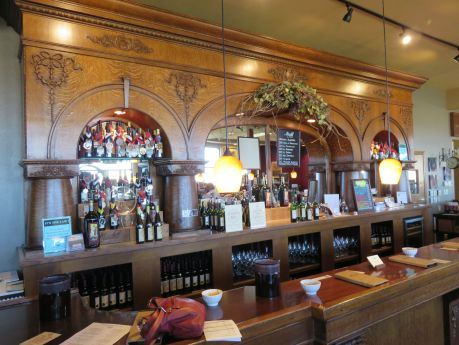
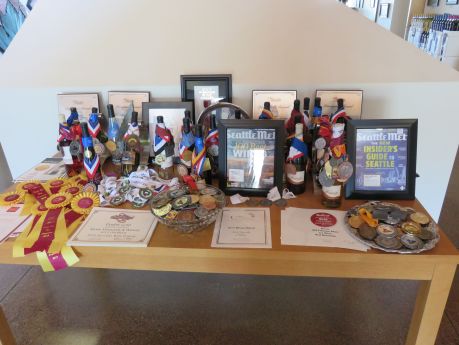

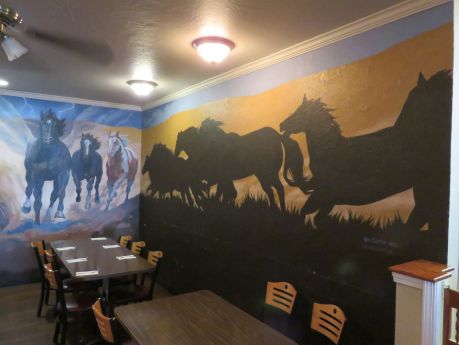
Leave a Reply
Want to join the discussion?Feel free to contribute!